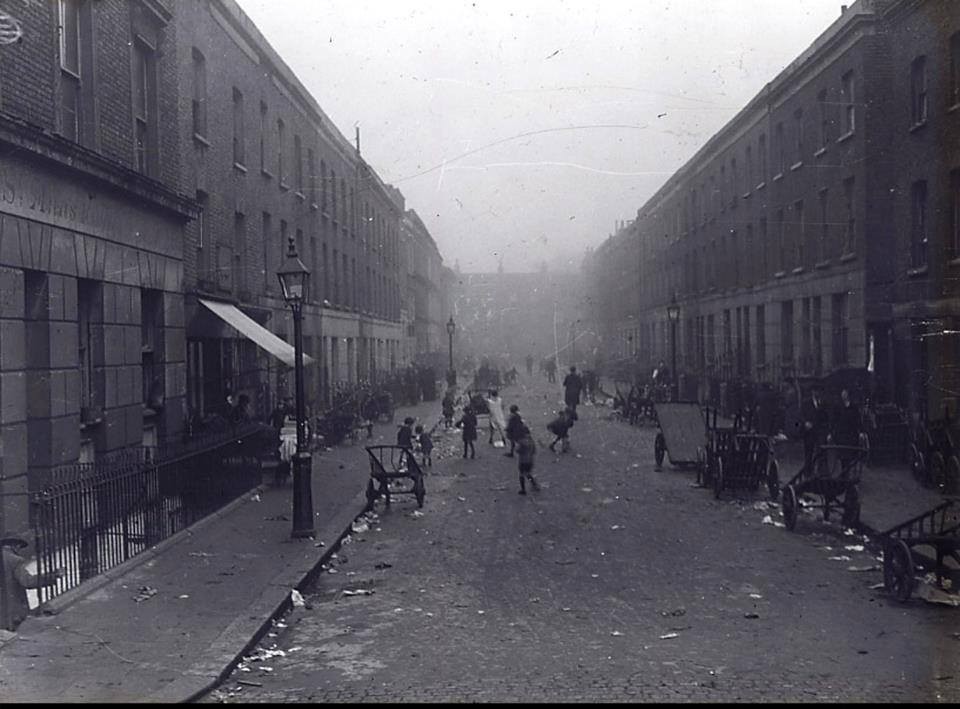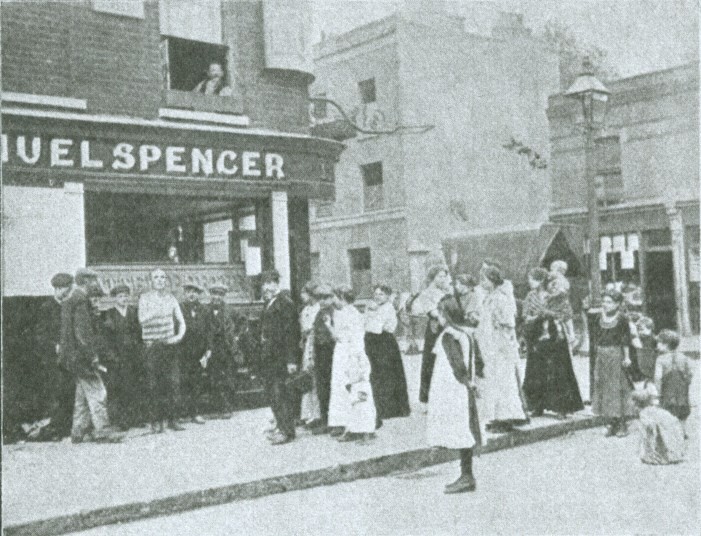
Kenley Street, W11
Road in/near Notting Hill, existed between the 1860s and the 1960s.
 | Kenley Street, W11 Road in/near Notting Hill, existed between the 1860s and the 1960s. |
| HOME | · | ARTICLE | · | MAPS | · | STREETS | · | BLOG | · | CONTACT US |
| MAP YEAR: | 1750 | 1800 | 1810 | 1820 | 1830 | 1860 | 1900 | 1950 | 2024 | Show map without markers |
| Use the control in the top right of the map above to view this area on another historic map | ||||||||||
| Click here to explore another London street We now have 666 completed street histories and 46834 partial histories Find streets or residential blocks within the M25 by clicking STREETS |
| CONTRIBUTIONS TO THE LOCALITY |
  Joan Clarke Added: 2 Feb 2021 10:54 GMT | Avondale Park Gardens My late aunt Ivy Clarke (nee Burridge) lived with her whole family at 19 Avondale Park Gardens, according to the 1911 census and she was still there in 1937.What was it like in those days, I wonder, if the housing was only built in 1920? Reply |
  ken gaston Added: 16 Jan 2021 11:04 GMT | Avondale Park Gardens My grandmother Hilda Baker and a large family lived in number 18 . It was a close community and that reflected in the coronation celebration held on the central green . I grew up in that square and went to school at Sirdar Road then St. Clements it was a great place to grow up with a local park and we would also trek to Holland Park or Kensington Gardens .Even then the area was considered deprived and a kindergarden for criminals . My generation were the first to escape to the new towns and became the overspill from London to get decent housing and living standards . Reply |
  john ormandy Added: 20 Mar 2021 17:48 GMT | Mary Place Workhouse There was a lady called Ivy who lived in the corner she use to come out an tell us kids off for climbing over the fence to play football on the green. Those were the days. Reply |
  john ormandy Added: 14 Mar 2021 18:59 GMT | Avondale Park Gardens, W11 We moved to number 6 in 1950 an family still live there now. I think i remember a family name of Larter living in the house you mention also living in the Gdns were names Prior, Cannon, Parsons Clives at number 26 who i went to school with. Reply |
  Brian Lucas Added: 15 Mar 2021 16:02 GMT | Avondale Park Gardens, W11 I also lived here at No. 15 1854 then move to No. 23 The Lucas Family Reply |
  john ormandy Added: 20 Mar 2021 17:21 GMT | Avondale Park Gardens, W11 Remember the Lucas family think the eldest was about same age as me cant remember his name though seem to rember had several younger sisters may have been twins!! Reply |
  john ormandy Added: 20 Mar 2021 18:02 GMT | Avondale Park Gardens, W11 Went to that coranation party with my two younger brothers who both went to St Clements along with Alan Mullery the footballer. I went to St James before moving on to St Johns along with Alan who lived in Mary Place where we were both in the same class. Reply |
  Added: 19 Jun 2022 16:58 GMT | Runcorn Place, W11 Runcorn place Reply |
  Ken Herlingshaw Added: 17 Jun 2023 18:34 GMT | St John the Evangelist - Spire The top of the church spire fell off during WW2 (presumably during a bombing raid ?) and for many years after that the spire had a flat top. I don’t know when it was restored. Definitely not in the early fifties when I went to Sunday School there. Reply |
  Mark Biddle Added: 13 Dec 2023 17:23 GMT | Avondale Park Gardens, W11 My Grandparents David John and Esther Evans had a dairy shop 14 sirdar road from 1940s until 1973 when it was knocked down they moved to wilsham street lived until 1994 when Esther died Reply |
  Ken Herlingshaw Added: 17 Jun 2023 18:35 GMT | Clarendon Road - post WW2 I used to live at 62 Clarendon Road, from about 1947 to 1956. It was one of four prefabs on the site, numbers 60, 60A, 62 and 62A. The original building there (on the corner with Lansdowne Rise) was bombed during WW2. Prefabs weren’t very popular with the up-market Kensington Borough councillors, however, and at the earliest opportunity they were demolished and we were moved to Henry Dickens Court. We inherited a telephone line from the original occupier, a band leader, when we moved into the prefab and the phone number was BAYswater 0050. But we didn’t know anybody else with a phone to call. Reply |
  mh Added: 21 Jun 2023 12:15 GMT | Clarendon Road, W11 Interesting.... Reply |
| LATEST LONDON-WIDE CONTRIBUTIONS TO THE PROJECT |
  Tony Whipple Added: 16 Apr 2024 21:35 GMT | Frank Whipple Place, E14 Frank was my great-uncle, I’d often be ’babysat’ by Peggy while Nan and Dad went to the pub. Peggy was a marvel, so full of life. My Dad and Frank didn’t agree on most politics but everyone in the family is proud of him. A genuinely nice, knowledgable bloke. One of a kind. Reply |
  Theresa Penney Added: 16 Apr 2024 18:08 GMT | 1 Whites Row My 2 x great grandparents and his family lived here according to the 1841 census. They were Dutch Ashkenazi Jews born in Amsterdam at the beginning of the 19th century but all their children were born in Spitalfields. Reply |
  Wendy Added: 22 Mar 2024 15:33 GMT | Polygon Buildings Following the demolition of the Polygon, and prior to the construction of Oakshott Court in 1974, 4 tenement type blocks of flats were built on the site at Clarendon Sq/Phoenix Rd called Polygon Buildings. These were primarily for people working for the Midland Railway and subsequently British Rail. My family lived for 5 years in Block C in the 1950s. It seems that very few photos exist of these buildings. Reply |
  Steve Added: 19 Mar 2024 08:42 GMT | Road construction and houses completed New Charleville Circus road layout shown on Stanford’s Library Map Of London And Its Suburbs 1879 with access via West Hill only. Plans showing street numbering were recorded in 1888 so we can concluded the houses in Charleville Circus were built by this date. Source: Charleville Circus, Sydenham, London Reply |
  Steve Added: 19 Mar 2024 08:04 GMT | Charleville Circus, Sydenham: One Place Study (OPS) One Place Study’s (OPS) are a recent innovation to research and record historical facts/events/people focused on a single place �’ building, street, town etc. I have created an open access OPS of Charleville Circus on WikiTree that has over a million members across the globe working on a single family tree for everyone to enjoy, for free, forever. Source: Charleville Circus, Sydenham, London Reply |
  Charles Added: 8 Mar 2024 20:45 GMT | My House I want to know who lived in my house in the 1860’s. Reply |
  NH Added: 7 Mar 2024 11:41 GMT | Telephone House Donald Hunter House, formerly Telephone House, was the BT Offices closed in 2000 Reply |
  Paul Cox Added: 5 Mar 2024 22:18 GMT | War damage reinstatement plans of No’s 11 & 13 Aldine Street Whilst clearing my elderly Mothers house of general detritus, I’ve come across original plans (one on acetate) of No’s 11 & 13 Aldine Street. Might they be of interest or should I just dispose of them? There are 4 copies seemingly from the one single acetate example. Seems a shame to just junk them as the level of detail is exquisite. No worries if of no interest, but thought I’d put it out there. Reply |
| LOCAL PHOTOS |









